The #periodictable of elements – the backbone of Chemistry – turns 150! Back then, a Russian Chemist and inventor, Dmitri Mendeleev, formulated the Periodic Law, and his farsighted version brought us the Periodic Table. Most of us have fond (or in many cases, not so fond) memories of trying to memorize this table when we were in school.
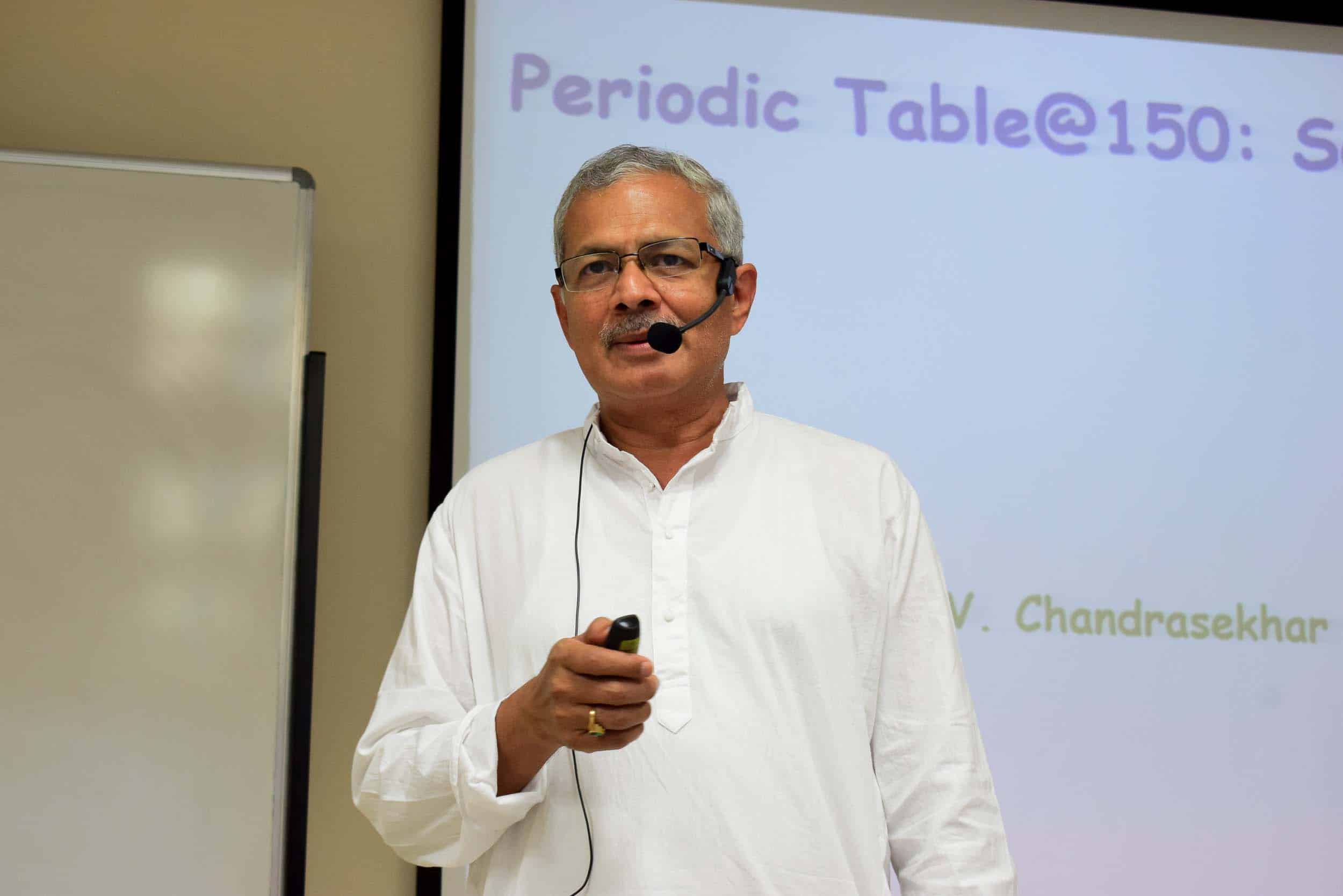
Periodic Table @ 150
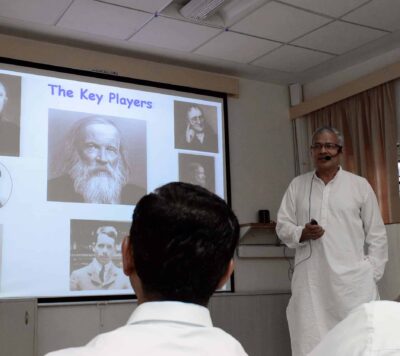
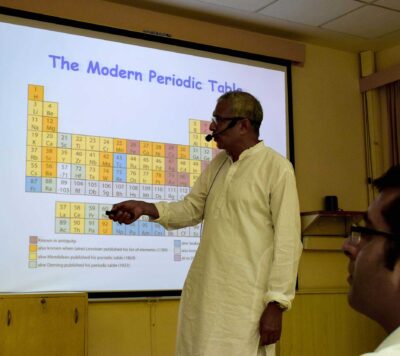
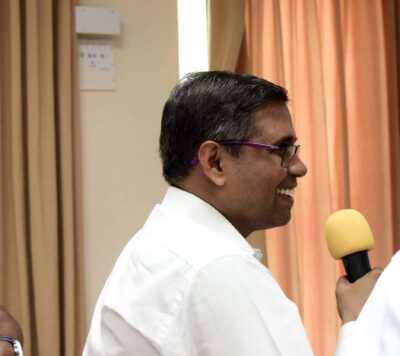
As part of this celebration, the Department of Chemistry, SSSIHL arranged a talk by Prof. V Chandrasekhar, Centre Director, Tata Institute of Fundamental Research, Hyderabad, on 8 August 2019. He spoke on the topic, Periodic Table @150: Some Stories.
He started with historical anecdotes of Mendeleev and his contributions to the development of the periodic table. He elaborated on why we need a periodic table and why (at all) do we need to establish a relationship between the elements? The answer lies in the fact that we use many — if not all the elements — as part of our daily lives.
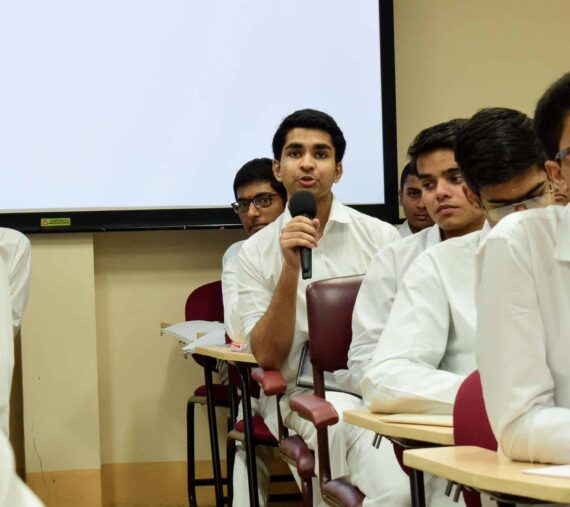
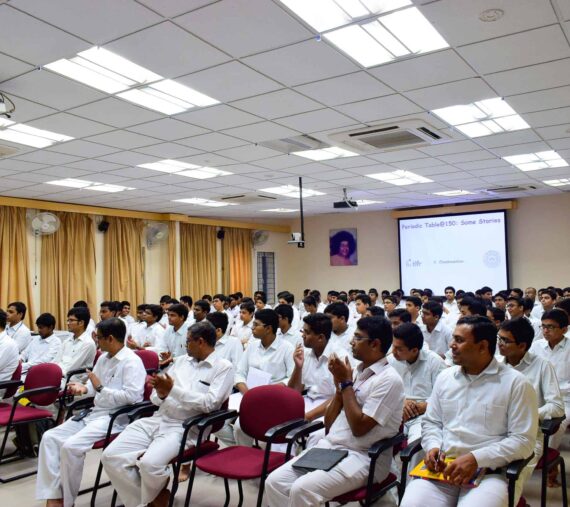
Pluto stated that all matter is made of elements (earth, fire, air, water and space), and thus began the journey of science. Chemistry, on the other hand, began with the alchemist’s search for the philosopher’s stone to convert base metals into gold. In this regard, there were many alchemists, such as Henning Brand (who discovered Phosphorus – flask glowing in the dark), Robert Boyle (who gave the gas laws) and Lavoisier (who quantified science by coming up with the law of mass conservation).
In time, there were many elements and a growing number of attempts on finding a relationship between the elements, starting with Dobereiner triads, Newland’s octave and finally Mendeleev. Against all the odds, he completed his education and went on to develop a periodic table that was first arranged, based on the atomic mass of elements. He not only arranged the elements into a table but also predicted the possibility of the discovery of new elements by proposing gaps between the existing elements. Then, Lord Rayleigh and Sir William Ramsay discovered the noble gases and Chadwick discovered the isotopes.
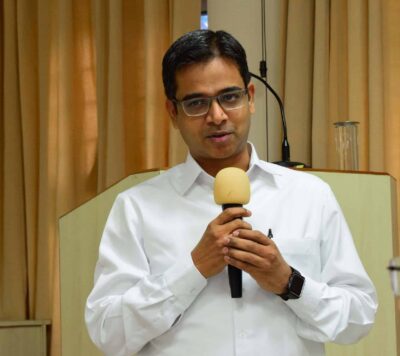
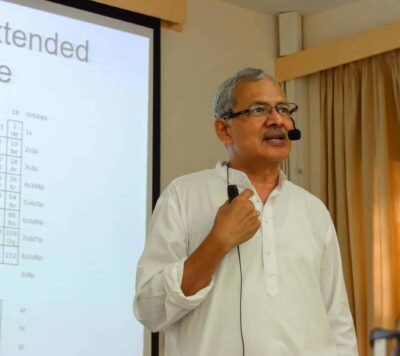
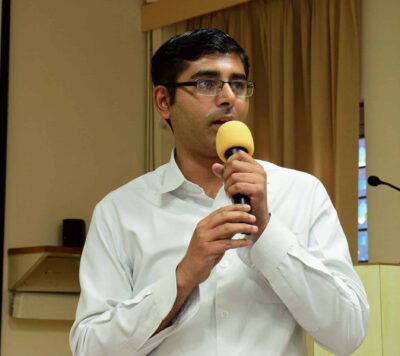
The final piece of the puzzle in the periodic table, as we know of today, was solved by Henry Moseley, who arranged the periodic table by atomic number and then several gaps were filled later by the discovery of more elements of the periodic table by scientists such as Seaborg. The talk looked at the development of the periodic table from the layman’s perspective, offering a fusion of science and history. It was delightful, insightful and invigorating.
#SSSIHLChemistry #SSSIHL

